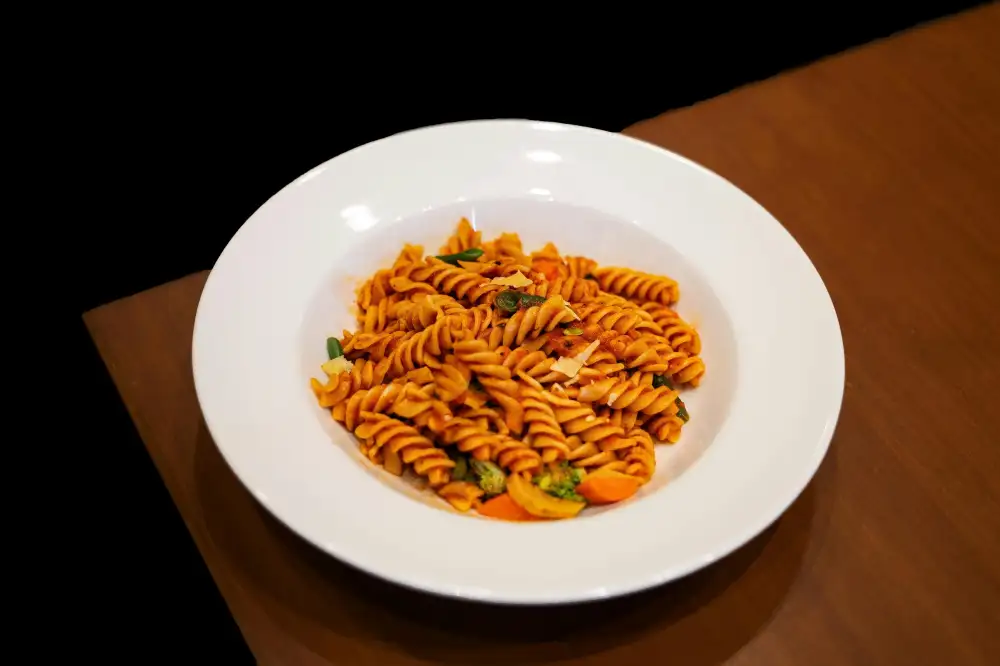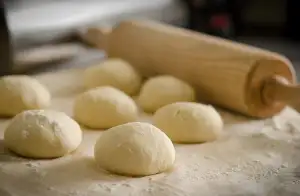Master the Art of Hollandaise Sauce: A Delectable Recipe for Culinary Perfection

- History and Origin of Hollandaise Sauce
- Ingredients Required for Hollandaise Sauce
- Step-by-Step Guide to Making Hollandaise Sauce
- Tips and Tricks for Perfecting Hollandaise Sauce
- Variations and Flavor Enhancements for Hollandaise Sauce
- Serving Suggestions and Pairings for Hollandaise Sauce
- Health Benefits and Nutritional Value of Hollandaise Sauce
- Frequently Asked Questions about Hollandaise Sauce
Hollandaise sauce, a classic French emulsion, is renowned for its rich and creamy texture. This velvety sauce is a staple in many culinary traditions and adds a luxurious touch to various dishes. Made from egg yolks, butter, lemon juice, and seasonings, Hollandaise sauce is known for its smooth consistency and tangy flavor profile. Whether drizzled over poached eggs or served alongside grilled asparagus, this delectable sauce elevates any dish to new heights of culinary perfection. Join us on a journey to master the art of Hollandaise sauce and unlock the secrets behind its timeless appeal.
History and Origin of Hollandaise Sauce
Hollandaise sauce, a classic French emulsion sauce, has a rich history that dates back to the 17th century. Its origin can be traced to the region of Holland, which is now known as the Netherlands. The sauce was originally called "sauce Isigny" after the town of Isigny-sur-Mer in Normandy, France.
However, it was not until the 19th century that the sauce gained popularity and became known as "hollandaise." The name is believed to have been derived from the Dutch influence on French cuisine during that time.
Hollandaise sauce was traditionally served with fish and seafood dishes. It was considered a luxurious and indulgent addition to meals, often reserved for special occasions and fine dining establishments.
Over the years, hollandaise sauce has become a staple in many culinary traditions around the world. Its creamy texture and tangy flavor make it a versatile condiment that complements a wide range of dishes.
Today, hollandaise sauce continues to be celebrated for its smooth consistency and velvety mouthfeel. Its historical significance and enduring popularity have solidified its place as one of the most beloved sauces in French cuisine.
Ingredients Required for Hollandaise Sauce
To make a classic hollandaise sauce, you will need the following ingredients:
1. Egg yolks: The rich and creamy texture of hollandaise sauce comes from egg yolks. Use fresh, high-quality eggs for the best results.
2. Butter: Unsalted butter is traditionally used in hollandaise sauce. It should be melted and clarified to remove any milk solids.
3. Lemon juice: Freshly squeezed lemon juice adds a tangy and bright flavor to the sauce. It also helps to balance the richness of the egg yolks and butter.
4. Salt: A pinch of salt enhances the overall taste of the sauce. Use a fine-grained salt for easy incorporation.
5. Cayenne pepper or white pepper: A touch of heat from cayenne pepper or a milder flavor from white pepper can be added to give the sauce a subtle kick.
These simple ingredients come together to create a velvety smooth and luscious hollandaise sauce that complements a variety of dishes.
Step-by-Step Guide to Making Hollandaise Sauce
1. Start by clarifying the butter. Melt unsalted butter over low heat until it separates into three layers: foam on top, clarified butter in the middle, and milk solids at the bottom. Skim off the foam and carefully pour the clarified butter into a separate container, leaving behind the milk solids.
2. In a heatproof bowl, whisk together egg yolks, lemon juice, and a pinch of salt until well combined.
3. Place the bowl over a pot of simmering water (make sure the bottom of the bowl doesn't touch the water). Continue whisking vigorously while slowly pouring in the clarified butter in a steady stream.
4. Keep whisking until the sauce thickens to a creamy consistency. Be careful not to overcook or scramble the eggs.
5. Remove from heat and season with salt, pepper, and any additional flavorings like cayenne pepper or Dijon mustard for extra kick.
6. If needed, adjust the consistency by adding warm water or lemon juice gradually while whisking.
7. Serve immediately or keep warm in a thermos or double boiler until ready to use.
Mastering hollandaise sauce requires practice and patience. With these step-by-step instructions, you'll be able to create this classic French sauce with ease and impress your guests with its silky texture and rich flavor.
Tips and Tricks for Perfecting Hollandaise Sauce
To perfect your Hollandaise sauce, here are some tips and tricks to keep in mind:
1. Use fresh ingredients: Opt for fresh eggs, lemon juice, and butter for the best flavor and texture.
2. Maintain the right temperature: It's crucial to keep the heat low while whisking the sauce to prevent curdling. Use a double boiler or a heatproof bowl over simmering water.
3. Whisk vigorously: Whisk continuously and vigorously to create an emulsion and achieve a smooth, creamy consistency.
4. Gradually add butter: Slowly pour in melted butter while whisking constantly to ensure it incorporates evenly into the sauce.
5. Strain if needed: If you notice any lumps or bits of cooked egg in your sauce, strain it through a fine-mesh sieve for a silky smooth finish.
6. Adjust seasoning: Taste your Hollandaise sauce before serving and adjust the seasoning with salt, pepper, or even a pinch of cayenne for added flavor.
7. Serve immediately: Hollandaise sauce is best served immediately after making it as it can separate if left standing for too long. If necessary, you can hold it in a thermos or over warm water for up to 30 minutes.
By following these tips and tricks, you'll be able to master the art of making Hollandaise sauce and elevate your culinary creations to new heights of perfection.
Variations and Flavor Enhancements for Hollandaise Sauce
While traditional Hollandaise sauce is undeniably delicious on its own, there are several variations and flavor enhancements that can take it to the next level. Here are a few ideas to experiment with:
1. Citrus Twist: Add a burst of freshness by incorporating citrus zest or juice into your Hollandaise sauce. Lemon, lime, or orange can provide a tangy and vibrant flavor profile.
2. Herb Infusion: Elevate the taste of your Hollandaise sauce by infusing it with herbs such as tarragon, chives, or dill. Simply steep the herbs in warm melted butter before adding them to the sauce mixture.
3. Spicy Kick: For those who enjoy a bit of heat, try adding a dash of hot sauce or cayenne pepper to your Hollandaise sauce. This will give it a subtle spicy kick that pairs well with various dishes.
4. Savory Additions: Experiment with savory ingredients like roasted garlic, caramelized onions, or sautéed mushrooms to add depth and complexity to your Hollandaise sauce.
5. Smoky Flavors: Incorporate smoky flavors by using smoked paprika or chipotle powder in your Hollandaise sauce recipe. This adds a unique twist that complements grilled meats or vegetables.
Remember, when experimenting with variations, it's important not to overpower the delicate flavors of the classic Hollandaise sauce. Start with small amounts of additional ingredients and adjust according to personal taste preferences. With these flavor enhancements, you can create a customized Hollandaise sauce that perfectly complements your culinary creations.
Serving Suggestions and Pairings for Hollandaise Sauce
Hollandaise sauce is a versatile condiment that can elevate a wide range of dishes. Its rich, creamy texture and buttery flavor make it a perfect accompaniment to many foods. Here are some serving suggestions and pairings to enhance your culinary experience with hollandaise sauce.
1. Classic Eggs Benedict: The most iconic pairing for hollandaise sauce is undoubtedly eggs Benedict. Serve it over poached eggs and toasted English muffins, topped with ham or smoked salmon. The velvety hollandaise adds a luxurious touch to this breakfast classic.
2. Grilled Asparagus: Hollandaise sauce complements the earthy flavors of grilled asparagus beautifully. Drizzle the sauce over the cooked asparagus spears for an elegant side dish that will impress your guests.
3. Steamed Vegetables: Jazz up steamed vegetables like broccoli, cauliflower, or carrots by adding a generous dollop of hollandaise sauce on top. It adds richness and depth to these otherwise simple dishes.
4. Grilled Fish or Seafood: Hollandaise sauce pairs exceptionally well with grilled fish or seafood like salmon, trout, shrimp, or scallops. The creamy acidity of the sauce balances out the smoky flavors of the grilled seafood.
5. Roasted Chicken or Turkey: Take your roast chicken or turkey to new heights by serving it with hollandaise sauce on the side. The combination of tender meat and velvety sauce creates a delightful harmony of flavors.
6. Grilled Steak: For meat lovers, hollandaise can be an unexpected but delicious addition to grilled steak. The buttery richness enhances the succulence of the beef, creating a decadent treat.
7. Baked Potatoes: Elevate your baked potatoes by topping them with hollandaise sauce instead of traditional sour cream or butter. The creamy tanginess adds a gourmet twist to this comforting side dish.
8. Artichokes: Steamed or grilled artichokes are a perfect canvas for hollandaise sauce. Dip the leaves into the sauce and savor the combination of flavors and textures.
Remember, hollandaise sauce is best served warm, so make sure to keep it at a gentle heat while serving. Experiment with these suggestions or create your own unique pairings to explore the versatility of this delectable sauce.
Health Benefits and Nutritional Value of Hollandaise Sauce
Hollandaise sauce, despite its rich and creamy nature, does offer some health benefits. It is a good source of vitamins and minerals, including vitamin B12, which is essential for nerve function and the production of red blood cells. The sauce also contains vitamin A, which promotes healthy vision and immune function. Additionally, hollandaise sauce provides a small amount of protein and healthy fats from the egg yolks and butter used in its preparation. However, it should be consumed in moderation due to its high calorie and fat content.
Frequently Asked Questions about Hollandaise Sauce
1. What is the main ingredient in Hollandaise sauce?
The main ingredient in Hollandaise sauce is butter, which gives it its rich and creamy texture.
2. Can I make Hollandaise sauce without a double boiler?
Yes, you can make Hollandaise sauce without a double boiler by using a heatproof bowl placed over a pot of simmering water.
3. Is it safe to eat Hollandaise sauce if it contains raw eggs?
Hollandaise sauce is made with raw eggs, but the heat from the melted butter and gentle cooking process helps to reduce the risk of foodborne illness. However, individuals with compromised immune systems should avoid consuming raw or undercooked eggs.
4. How long can I store leftover Hollandaise sauce?
Leftover Hollandaise sauce should be refrigerated and consumed within 2-3 days for optimal freshness and safety.
5. Can I reheat Hollandaise sauce?
It is not recommended to reheat Hollandaise sauce as it can cause the emulsion to break and result in a grainy texture. It's best to make only what you need for immediate use.
6. Can I freeze Hollandaise sauce?
Freezing may cause separation and affect the texture of Hollandaise sauce, so it is not recommended.
7. What are some common problems when making Hollandaise sauce?
Common issues include curdling or separating of the emulsion, which can be prevented by ensuring all ingredients are at room temperature and adding the melted butter slowly while whisking continuously.
8. Can I use margarine instead of butter in Hollandaise sauce?
It is not recommended to use margarine as a substitute for butter in Hollandaise sauce as it may alter the taste and texture.
9. Can I make a vegan version of Hollandaise sauce?
Yes, there are vegan versions of Hollandaise sauce that use plant-based ingredients such as vegan butter or coconut oil, tofu, and lemon juice.
10. Is Hollandaise sauce gluten-free?
Hollandaise sauce is typically gluten-free, but it's important to check the ingredients of any store-bought or pre-packaged versions, as they may contain additives or thickeners that could contain gluten.
In conclusion, mastering the art of Hollandaise sauce is truly a culinary achievement. This velvety and rich sauce has a long history and origin, originating from France in the 17th century. With just a few simple ingredients and a careful technique, you can create a sauce that elevates any dish to new heights.
Remember to be patient and take your time when making Hollandaise sauce. The emulsion process requires attention and precision, but the end result is well worth the effort. Don't be afraid to experiment with different flavor enhancements or variations, such as adding herbs or spices, to customize the sauce to your liking.
When serving Hollandaise sauce, it pairs perfectly with dishes like Eggs Benedict, asparagus, or grilled fish. Its creamy texture and buttery taste add a luxurious touch to any meal. Additionally, Hollandaise sauce contains essential vitamins and minerals like vitamin B12 and iron.
Frequently asked questions about Hollandaise sauce often revolve around its difficulty level or potential for curdling. By following our step-by-step guide and tips for perfecting the sauce, you can overcome these challenges and create a flawless Hollandaise every time.
In conclusion, Hollandaise sauce is an art form that can elevate your culinary creations to new heights. With practice and patience, you can master this classic French sauce and impress your guests with its decadent flavors. So go ahead, embark on your own culinary journey by exploring the artistry of Hollandaise sauce!
Published: 13. 02. 2024
Category: Recipes



